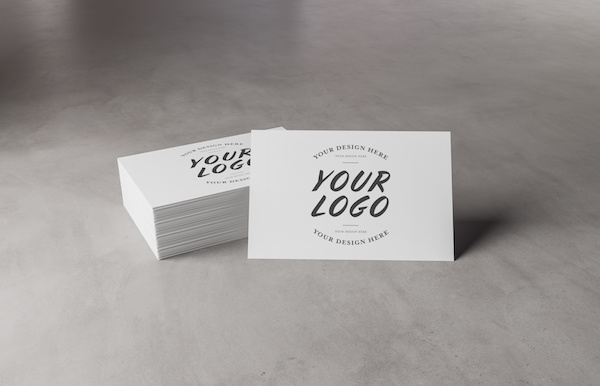
There are several reasons you’ll need a business card for your company. For one, it helps create that initial rapport with your potential clients. It’s also a great way of marketing yourself to the public, and by giving someone your card, it makes it easier for them to contact you back when needed. Of course, this isn’t something that all startups consider because they feel it could be costly.
However, it shouldn’t be too expensive, especially if you’re just starting with your business. There are ways through which you can make your own custom cards without having to consult an expert. Are you wondering where to start? Here are a few tips that will help you through the project:
1. Consider The Material.
This is one thing that many people fail to consider because it doesn’t seem too significant. However, the material you use for your business card says a lot about your company and its objectives.
For instance, if you’re running an eco-friendly business, the material you use should support the initiative. Rather than going for the traditional options, like papers, you should consider plastic. Of course, it might sound contradictory, given the reputation that plastics have gained over the years in relation to pollution. However, if you think about it, hard plastic can be easily recycled, and that won’t hurt the environment.
On the other hand, using paper means you’re supporting cutting down of trees, which, in some way, may go against what your business is actually about. If you’re not sure about the right material for your card, you can consult printing Adelaide experts or those nearest to where you live. These professionals are also willing to do all the dirty work so that you can get the best out of this marketing project.
2. Consider Your Target Audience.
Once you’ve decided on which material best suits your company, you’ll need to do some research about your audience. After all, the card is all about presenting your business to the public, and you’d want to do that the right way. Some of the basic factors to keep in mind include their professions and social beliefs.
For instance, if your consumers are designers, then, your approach should involve some artistic design in it. This is quite different from a company whose audience is a group of bankers or lawyers. As for the social beliefs, make sure you don’t cross the red line because that could be damaging for your business.
3. Stay Relevant.
Sometimes, you can be tempted to go overboard with your business presentation, but that could work against your marketing strategy. As a rule of thumb, include only the important information that every customer is always looking for, rather than writing down all your business objectives on the card. So, what pieces of information should you print out? These include:
- Job Title Or Business Name.
Obviously, you’d want people to know who they’re trying to contact. The trick is to always use the name that you deem friendly, rather than the one on your national ID. For instance, if you’re David, but prefer being called Dave, then, go for the second option. It comes out quite casual, which will make it simpler for the target audience to get along with you. In addition, you’ll avoid awkward reintroductions in the future.
- Logo And Tagline.
A logo and tagline may seem like a simple feature, but it can make a lot of difference in your chances for success. Remember, the business card needs to convey the identity of your business and its policies. The importance of a logo in your business card is that it makes it easier for the customers to relate with your products and services. For instance, when one comes across a new item on sale, they’re more likely to remember the drawing on it rather than the manufacturer’s name.
- Contact Information.
Finally, you’ll need to print all of your business’s contact information. Make sure you include your email, phone number, and social media handles. If you don’t have them at the moment, consider getting an account for all popular communication channels. Remember, if someone has a Twitter account and you only include your Facebook page, they aren’t likely to create a new Facebook account just to communicate with you. Therefore, include as many options as possible.
Conclusion.
Designing a business card isn’t a tough job even for a beginner. However, you’ll need to keep in mind all important factors for you to be successful in your marketing strategy. For one, the material you use for your card can say a lot about your business. As such, you’ll need to make a decision on whether to use a paper or hard plastic. Other features that might come in handy are the characteristics of your target audience, such as their professions and social beliefs.
A business card is not complete without the right contact information; therefore, be sure to print everything relevant on it.
The post 3 Tips For Designing Your Business Cards appeared first on Young Upstarts.
via https://www.AiUpNow.com
November 14, 2020 at 10:15AM by admin, Khareem Sudlow

